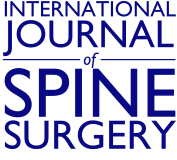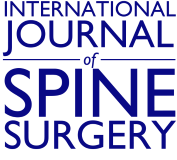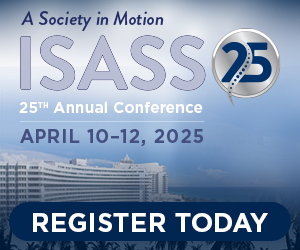ABSTRACT
Background Incidental dural tears during lumbar endoscopy can be challenging to manage. There is limited literature on their appropriate management, risk factors, and the clinical consequences of this typically uncommon complication.
Materials and Methods To improve the statistical power of studying durotomy with lumbar endoscopy, we performed a retrospective survey study among endoscopic spine surgeons by email and chat groups on social media networks, including WhatsApp and WeChat. Descriptive and correlative statistics were done on the surgeons' recorded responses to multiple-choice questions. Surgeons were asked about their clinical experience with spinal endoscopy, training background, the types of lumbar endoscopic decompression they perform by approach, the decompression instruments they use, and incidental durotomy incidence with routine lumbar endoscopy.
Results There were 689 dural tears in 64 470 lumbar endoscopies, resulting in an incidental durotomy incidence of 1.07%. Seventy percent of the durotomies were reported by 20.4% of the surgeons. Eliminating these 19 outlier surgeons yielded an adjusted durotomy rate of 0.32. Endoscopic stenosis decompression (54.8%; P < .0001), rather than endoscopic discectomy (44.1%; 41/93), was significantly more associated with durotomy. Medium-sized dural tears (1–10 mm) were the most common (52.2%; 48/93). Small pinhole durotomies (less than 1 mm) were the second most common type (46.7%; 43/93). Rootlet herniations were seen by 46.2% (43/93) of responding surgeons. The posterior dural sac injury during the interlaminar approach (57%; 53/93) occurred more frequently than traversing nerve-root injuries (31.2%) or anterior dural sac (23.7%; 22/93). Exiting nerve-root injuries (10.8%;10/93) were less common. Over half of surgeons did not attempt any repair or closure (52.2%; 47/90). Forty percent (36/90) used sealants. Only 7.8% (7/90) of surgeons attempted an endoscopic repair or sutures (11.1%; 10/90). DuralSeal was the most commonly used brand of commercially available sealant used (42.7%; 35/82). However, other sealants such as Tisseal (15.9%; 13/82), Evicel (2.4%2/82), and additional no-brand sealants (38; 32/82) were also used. Nearly half of the patients (48.3%; 43/89) were treated with 24–48 hours of bed rest. The majority of participating surgeons (64%; 57/89) reported that the long-term outcome was unaffected. Only 18% of surgeons reported having seen the development of a postoperative cerebrospinal fluid (CSF)-fistula (18%;16/89). However, the absolute incidence of CSF fistula was only 0.025% (16/64 470). Severe radiculopathy with dysesthesia; sensory loss; and motor weakness in association with an incidental durotomy were reported by 12.4% (11/89), 3.4% (3/89), and 2.2% (2/89) of surgeons, respectively.
Conclusions The incidence of dural tears with lumbar endoscopy is about 1%. The incidence of durotomy is higher with the use of power drills and the interlaminar approach. Stenosis decompression that typically requires the more aggressive use of these power instruments has a slightly higher incidence of dural tears than does endoscopic decompression for a herniated disc. Most dural tears are small and can be successfully managed with mechanical compression with Gelfoam and sealants. Two-thirds of patients with incidental dural tears had an entirely uneventful postoperative course. The remaining one-third of patients may develop a persistent CSF leak, radiculopathy with dysesthesia, sensory loss, or motor function loss. Patients should be educated preoperatively and reassured.
Level of Evidence 3.
Footnotes
Disclosures and COI: Jorge Felipe Ramírez León, MD, is a shareholder and president of the board of directors, Ortomac, Colombia, and a consultant with Elliquence, USA. No other authors received funding for this study or declared conflicts of interest.
- This manuscript is generously published free of charge by ISASS, the International Society for the Advancement of Spine Surgery. Copyright © 2021 ISASS






